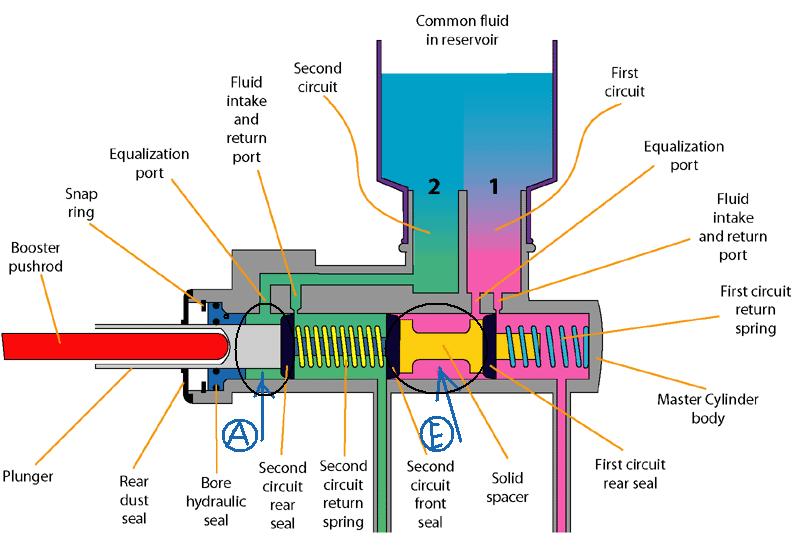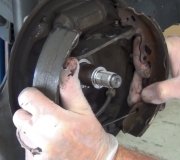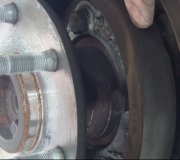I usually change the brake fluid with one more person that sits in the car and pump the brake pedal.
In order to do this job without assistance, I would like to know:
If I open the wheel cylinder nipples and let the old brake fluid, flow out of the system(into a bottle) by gravity,
will ALL the brake fluid in the system flow out?
At the image of the dual master cylinder that I attached, it looks like that the brake fluid in the circle parts, which I marked as A and E, will not flow out.
Will the brake fluid in those parts(A and E)really stayed in the master cylinder or will they, also, flow out of the system?
I know that usually, it is better to add fresh brake fluid to the reservoir during the process and not to let the fluid in the reservoir get down too much(air in the system)but I prefer to take out all the old fluid before adding fresh one.(Prevent mixing old and new fluid).
So, after the system is all empty of fluid(?For now, I don't know if it is all empty) I will add new fresh fluid(let it flow by gravity through the nipples)while the fresh fluid will push the air out.
Am I right?Will it work?
It will take much more time compare to the job with two people, but besides the time, are the results of the two methods(one person vs. Two person) the same quality?
I know that there are special tools(pumps. Etc)but I more interest in the process that I mentioned above.
Thanks in advance.
Saturday, August 2nd, 2014 AT 9:06 AM



